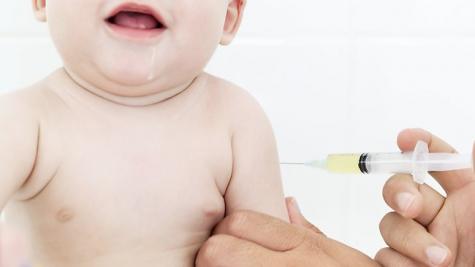Scientists from the University of Queensland's Children’s Medical Research Institute (QCMRI) have shown that the whooping cough vaccine for infants and young children is highly effective.
However, Associate Professor Stephen Lambert said that while three doses of the vaccine in the first six months of life provided good protection for children up to four years old, boosters given after this time wore off quickly.
“A key message from this study is that with a good, but still not perfect, vaccine reaching high coverage becomes even more important from a population health perspective,” he said.
“Parents can be reassured that the vaccination still offers the best protection against developing whooping cough, as children who aren’t vaccinated have a much greater risk of contracting the disease and developing serious complications.
He said that the findings showed the vaccine provided strong protection for young children, who were the most vulnerable to the infection and at highest risk of serious complications.
“Getting those first three doses starting from six weeks of age is one of the keys to keeping your baby safe.”
The study follows the switch from whole cell vaccine to acellular vaccine in Australia’s national immunisation schedule in 1999, as the latter had fewer side effects.
A 2012 QCMRI study found the nation-wide outbreak of whooping cough that started in 2009 was partly due to the reduced effectiveness of the acellular vaccine compared to the whole cell vaccine.
A/Professor Lambert said the latest study confirmed the benefits of the acellular vaccine.
"We know from these data that the current acellular vaccine for young children remains highly effective,” he said.
“Other research has shown that children unlucky enough to get whooping cough after being vaccinated will have a milder illness for a shorter time than those who have not received the vaccine."
"But these findings could go some way to explaining why we saw a resurgence of whooping cough in Australia, particularly in older children.
"In making the switch in vaccines in 1999 we may have traded off some of the protection whole cell vaccines provided in exchange for a better tolerated vaccine.
"Looking at the bigger picture, it shows us that we don't yet have the perfect whooping cough vaccine and it gives us cause to work towards developing a more effective as well as a safe vaccine for whooping cough."
Whooping cough is a highly contagious respiratory infection that begins with flu-like symptoms such as a blocked or runny nose, sneezing, mild fever and mild cough. Thick, sticky mucus can develop in the windpipe, which makes it difficult to eat, drink and breathe.
While the infection is generally milder in adults, if passed on to vulnerable babies it can be life-threatening.
Two forms of whooping cough vaccine are in use globally: whole cell vaccines and acellular vaccines.
- Whole cell vaccines contain whole whooping cough (pertussis) organisms that have been chemically inactivated. These vaccines have been associated with frequent adverse events.
- Acellular vaccines contain a small number – either three or five – of key proteins from the whooping cough organism. They have a much lower risk of adverse events compared to whole cell vaccines.
In the past 10 to 15 years, many developed countries have moved from whole cell to acellular vaccines for their improved side effect profile, but whole cell vaccines are still used in developing countries.
The study was published in the Medical Journal of Australia earlier this month.



















__small.png)










